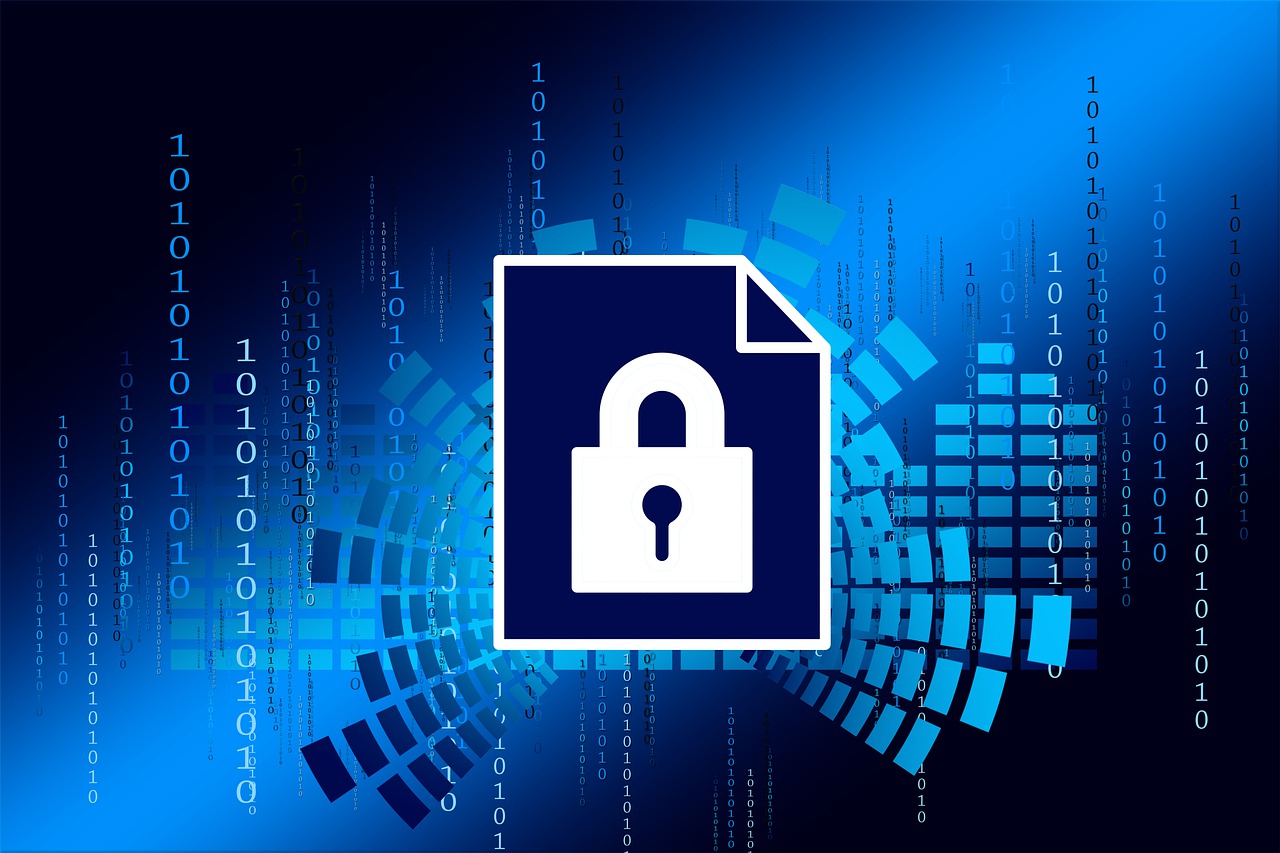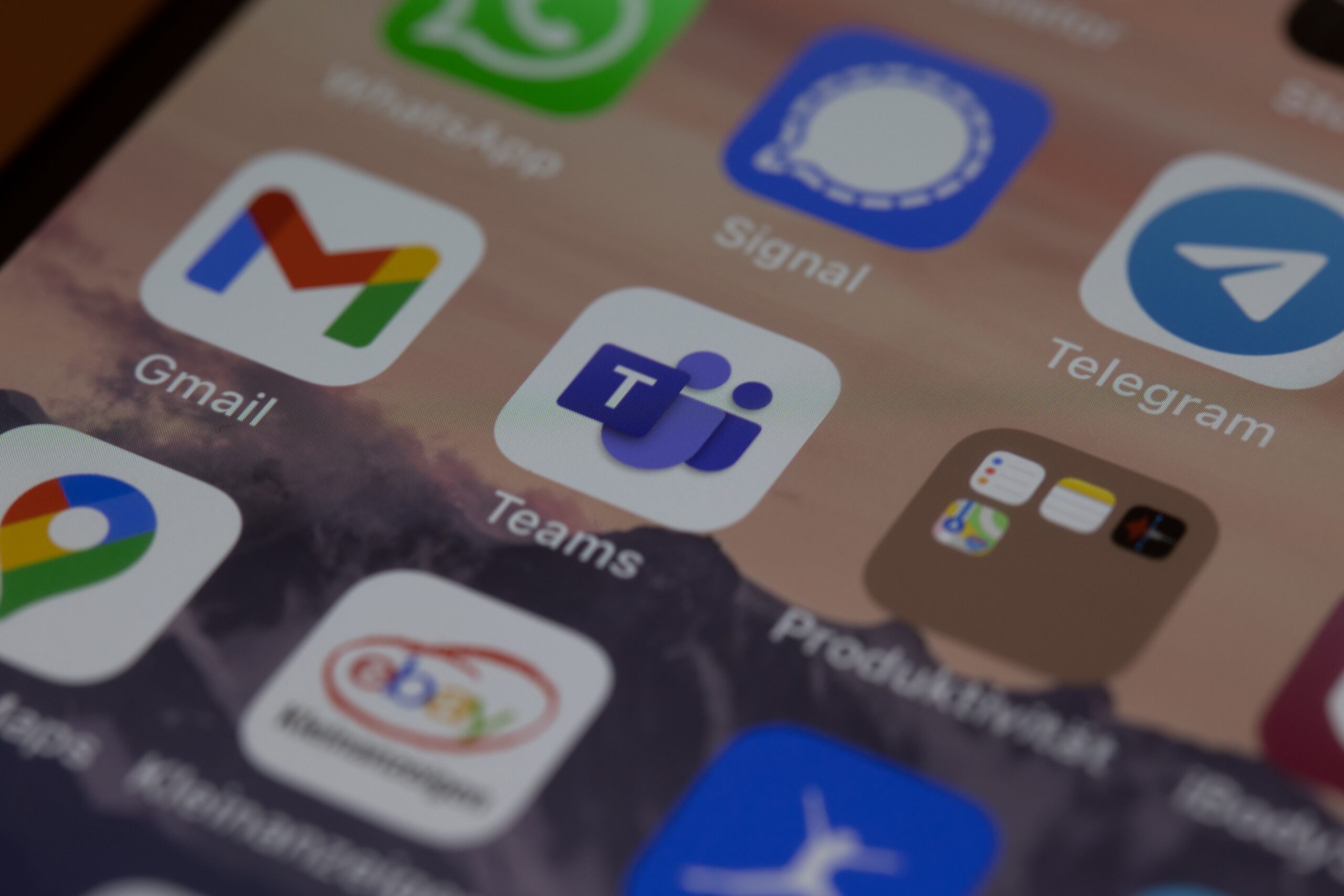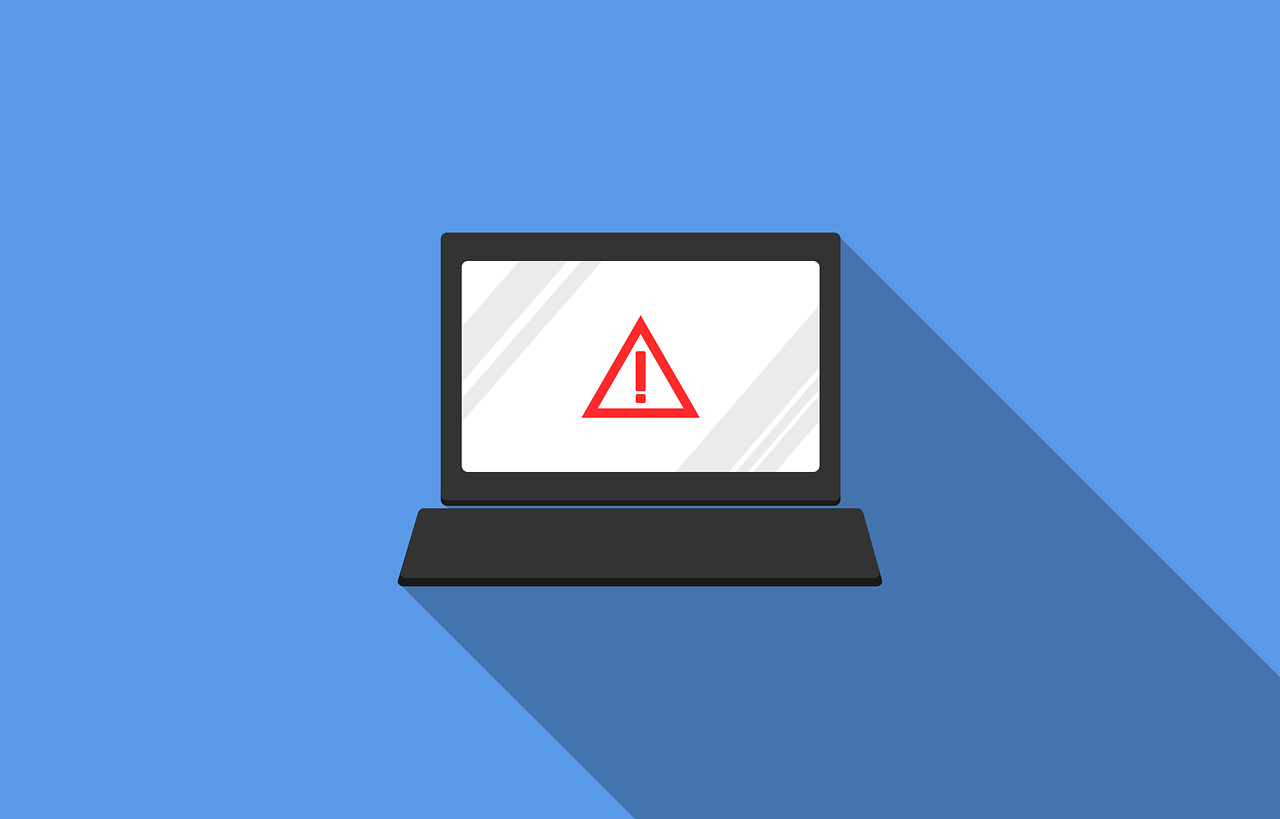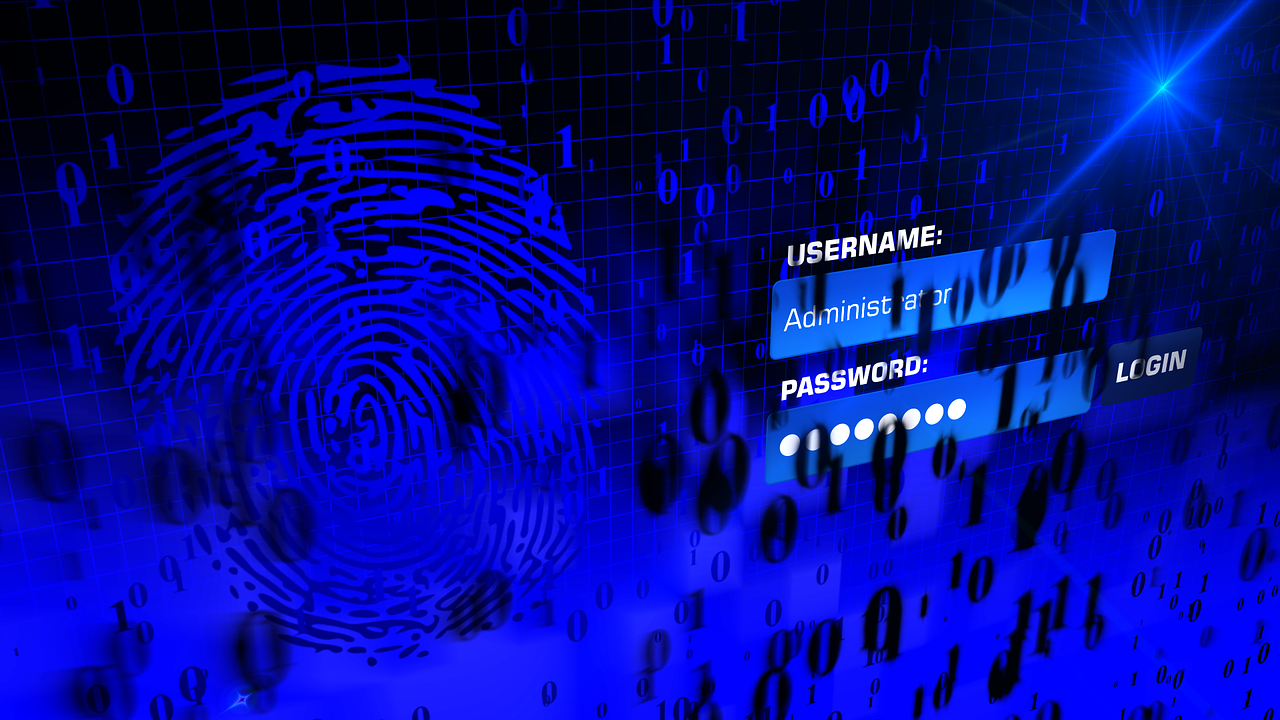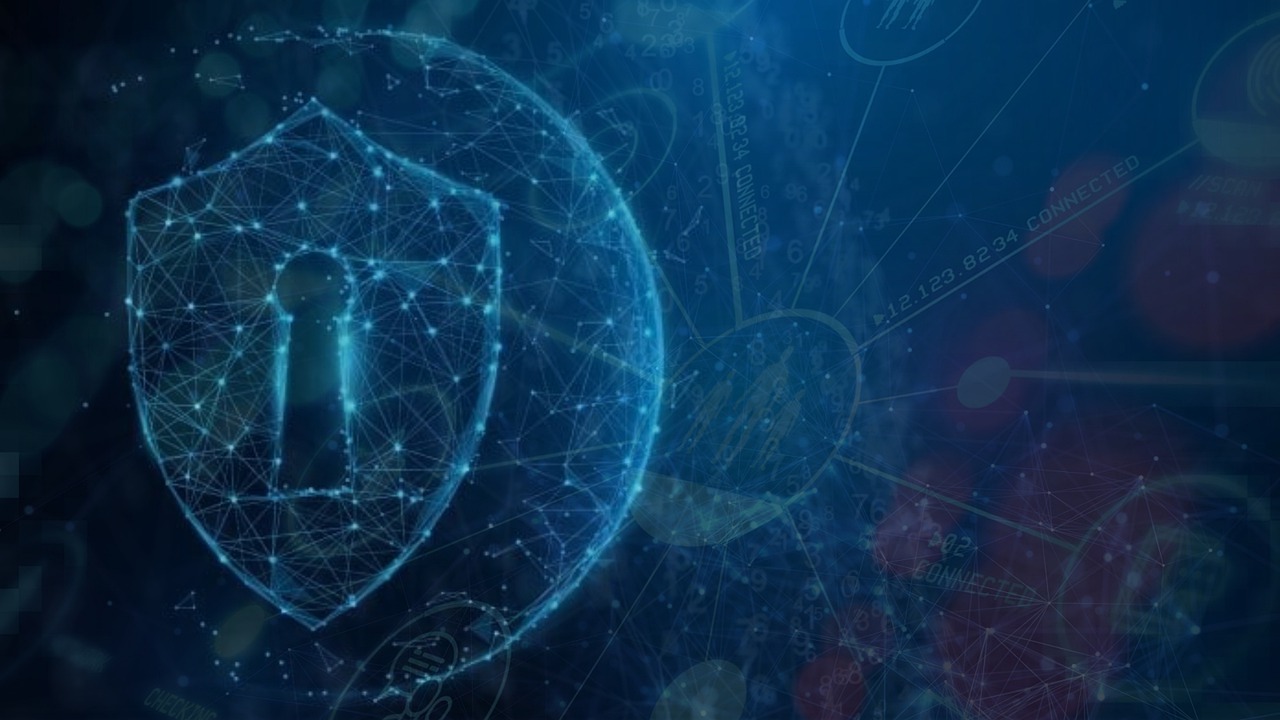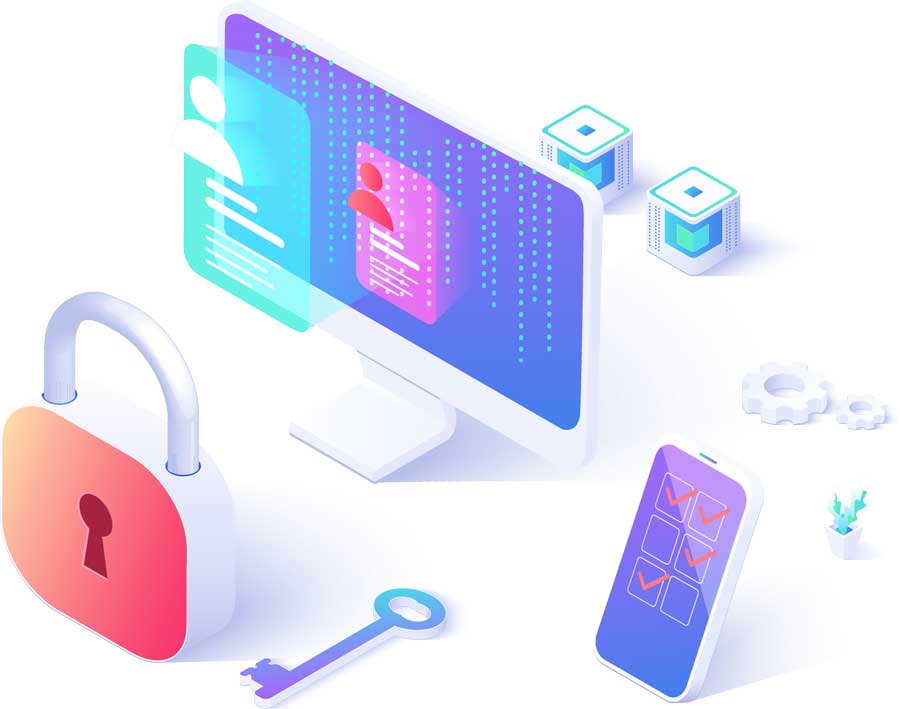Cybersecurity has become paramount for businesses across the globe. As technology advances, so do the threats. Recognizing this, the U.S. Securities and Exchange Commission (SEC) has introduced new rules. They revolve around cybersecurity. These new requirements are set to significantly impact businesses. These rules are a response to the growing sophistication of cyber threats. As well as the need for companies to safeguard their sensitive information. Let’s delve into the key aspects of these new SEC regulations. We’ll review what they are and discuss how they may affect your business. Understanding the New SEC Cybersecurity Requirements The SEC’s new cybersecurity rules emphasize the importance of proactive cybersecurity measures. These are for businesses operating in the digital landscape. One of the central requirements is the timely reporting of cybersecurity incidents. The other is the disclosure of comprehensive cybersecurity programs. The rules impact U.S. registered companies. As well as foreign private issuers registered with the SEC. Reporting of Cybersecurity Incidents The first rule is the disclosure of cybersecurity incidents deemed to be “material.” Companies disclose these on a new item 1.05 of Form 8-K. Companies have a time limit for disclosure. This is within four days of the determination that an incident is material. The company should disclose the nature, scope, and timing of the impact. It also must include the material impact of the breach. One exception to the rule is where disclosure poses a national safety or security risk. Disclosure of Cybersecurity Protocols This rule requires extra information that companies must report. They report this on their annual Form 10-K filing. The extra information companies must disclose includes: Potential Impact on Your Business Is your business subject to these new SEC cybersecurity requirements? If it is, then it may be time for another cybersecurity assessment. Penetration tests and cybersecurity assessments identify gaps in your protocols. They help companies reduce the risk of cyber incidents and compliance failures. Here are some of the potential areas of impact on businesses from these new SEC rules. Businesses will now face an increased compliance burden. This is as they work to align their cybersecurity policies with the new SEC requirements. This might cause a significant overhaul of existing practices, policies, and technologies. Ensuring compliance will likely mean a large amount of time and resources. This impacts both large corporations and smaller businesses The new regulations underscore the importance of incident response plans. Businesses will need to invest in robust protocols. These are protocols to detect, respond to, and recover from cybersecurity incidents promptly. This includes having clear procedures for notifying regulatory authorities, customers, and stakeholders. This would be a notification in the event of a data breach. Companies often rely on third-party vendors for various services. The SEC’s new rules emphasize the need for businesses to assess vendor practices. Meaning, how vendors handle cybersecurity. This shift in focus necessitates a comprehensive review. That review should be of existing vendor relationships. It may mean finding more secure alternatives. Cybersecurity breaches can erode investor confidence and damage a company’s reputation. With the SEC’s spotlight on cybersecurity, investors are likely to take note. This includes scrutinizing businesses’ security measures more closely. Companies with robust cybersecurity programs may instill greater confidence among investors. This can potentially lead to increased investments and shareholder trust. As businesses strive to meet the new SEC requirements, they will seek innovation. There is bound to be a surge in the demand for advanced cybersecurity solutions. This increased demand could foster a wave of innovation in the cybersecurity sector. This could lead to the development of more effective cyber protection solutions. The SEC Rules Bring Challenges, but Also Possibilities The new SEC cybersecurity requirements mark a significant milestone. This is a milestone in the ongoing battle against cyber threats. While these regulations pose challenges, they also present opportunities. The opportunities are for businesses to strengthen their cybersecurity posture. As well as enhancing customer trust, and fostering investor confidence. By embracing these changes proactively, companies can meet regulatory expectations. They can also fortify their defenses against the ever-evolving landscape of cyber threats. Adapting to these regulations will be crucial in ensuring long-term success. As well as the resilience of your business. Need Help with Data Security Compliance? When it comes to ensuring compliance with cybersecurity rules, it’s best to have an IT pro by your side. We know the ins and outs of compliance and can help you meet requirements affordably. Give us a call today to schedule a chat. —Featured Image Credit This Article has been Republished with Permission from The Technology Press.
How Can You Leverage the New MS Teams Payment App?
Are you a small business owner or a freelancer who offers services online? If so, you might be wondering how to get paid by your customers in a fast and convenient way. You might have tried different payment platforms. But they often require you to switch between different apps or websites. This can be time-consuming and confusing. There is now another option to streamline the payment process. Microsoft has launched the Teams Payments app. This is a new feature that allows you to request and receive payments from your customers. You do it within Microsoft Teams meetings. The Teams Payments app is currently available in the United States and Canada. Subscribers to Teams Essentials and Microsoft 365 Business get it at no charge. How Does the Teams Payment App Work? The Teams Payments app is simple to use. You can get the app from the Microsoft AppStore. You add it to your Teams account and connect it to your preferred payment service. You can choose from: Once you have set up the app, you can start requesting payments from your customers in Teams meetings. How Do You Send a Payment Request? To send a payment request, you just need to open the meeting chat. Then, select the Payments icon from the messaging extensions. Then, you can fill out a simple form. It includes the amount, currency, description, and recipients of your request. You can send the same request to several people if you want. The app will generate a card that shows the status of each payment, whether it is unpaid or paid. Image credit: Microsoft Your customers will see the same card in their meeting chat. They can click on the Pay Now button to complete their payment. The system will redirect them to the payment service that you have connected to the app. There, they can enter their payment details and confirm their transaction. Once they have done that, they will see a confirmation message in the chat. You will receive a notification that your payment has been processed. Image credit: Microsoft Benefits of Using the Teams Payment App The Teams Payments app has many benefits. Both for small businesses and freelancers who offer online services. Here are some of them: It saves time and hassle. You don’t need to switch between different apps or websites. You can easily request and receive payments from your customers. You can do everything within Teams meetings. This makes it more convenient and efficient for both parties. It increases customer satisfaction and loyalty. Your customers will appreciate the ease of paying you through Teams meetings. They don’t need to create an account or download an app to pay you. They can complete their transaction in a few clicks right inside the meeting. It boosts your revenue and cash flow. You can get paid faster and more securely by using the Teams Payments app. You don’t need to wait for invoices or checks to clear. You can receive your money within minutes of completing a service. Either directly into your bank account or PayPal account. It enhances your professional image and credibility. You can show your customers that you are using a reliable and trusted payment platform. One built by a well-known company that has been a technology leader for decades. You can also add a seller policy to your payment requests. Here you can specify your terms and conditions, cancellation policy, refund policy, etc. It helps you keep track of payments. Keeping track of payments is crucial for financial management. With the Teams Payments App, you can track transactions in real-time. You’ll receive instant notifications for successful payments. It will help you maintain a comprehensive record of your financial interactions. It’s seamlessly integrated with Microsoft 365. The Teams Payments App seamlessly integrates with Microsoft 365. You can leverage the power of Microsoft’s ecosystem. Using it to manage your communications, collaborations, and payments together. No need for more logins or complicated setups – it’s all within one platform. It increases productivity. Efficiency is the key to productivity. You reduce the time spent on payment-related tasks by integrating Payments into Teams. This efficiency translates into increased productivity. It allows you and your team to focus on core business activities and driving growth. The Teams Payments app marks a significant leap in digital business transactions. By leveraging this powerful tool, you’re simplifying payments. You’re also enhancing customer experiences, ensuring data security, and boosting productivity. We Can Help You Get More Out of Microsoft 365 The Teams Payments app is a great way to simplify and streamline your payment process. It can help you save time, increase customer satisfaction, and boost revenue. Need help with this or other Microsoft 365 tools? Our experts can work with you to help you make the most out of your Microsoft subscription. Give us a call today to schedule a chat. —Featured Image Credit This Article has been Republished with Permission from The Technology Press.
Beware of These 2024 Emerging Technology Threats
The global cost of a data breach last year was USD $4.45 million. This is an increase of 15% over three years. As we step into 2024, it’s crucial to be aware of emerging technology threats. Ones that could potentially disrupt and harm your business. Technology is evolving at a rapid pace. It’s bringing new opportunities and challenges for businesses and individuals alike. Not all technology is benign. Some innovations can pose serious threats to our digital security, privacy, and safety. In this article, we’ll highlight some emerging technology threats to be aware of in 2024 and beyond. Data Poisoning Attacks Data poisoning involves corrupting datasets used to train AI models. By injecting malicious data, attackers can skew algorithms’ outcomes. This could lead to incorrect decisions in critical sectors like healthcare or finance. Some actions are vital in countering this insidious threat. These include protecting training data integrity and implementing robust validation mechanisms. Businesses should use AI-generated data cautiously. It should be heavily augmented by human intelligence and data from other sources. 5G Network Vulnerabilities The widespread adoption of 5G technology introduces new attack surfaces. With an increased number of connected devices, the attack vector broadens. IoT devices, reliant on 5G networks, might become targets for cyberattacks. Securing these devices and implementing strong network protocols is imperative. Especially to prevent large-scale attacks. Ensure your business has a robust mobile device management strategy. Mobile is taking over much of the workload Organizations should properly track and manage how these devices access business data. Quantum Computing Vulnerabilities Quantum computing, the herald of unprecedented computational power, also poses a threat. Its immense processing capabilities could crack currently secure encryption methods. Hackers might exploit this power to access sensitive data. This emphasizes the need for quantum-resistant encryption techniques to safeguard digital information. Artificial Intelligence (AI) Manipulation AI, while transformative, can be manipulated. Cybercriminals might exploit AI algorithms to spread misinformation. They are already creating convincing deepfakes and automating phishing attacks. Vigilance is essential as AI-driven threats become more sophisticated. It demands robust detection mechanisms to discern genuine from malicious AI-generated content. Augmented Reality (AR) and Virtual Reality (VR) Exploits AR and VR technologies offer immersive experiences. But they also present new vulnerabilities. Cybercriminals might exploit these platforms to deceive users, leading to real-world consequences. Ensuring the security of AR and VR applications is crucial. Especially to prevent user manipulation and privacy breaches. This is very true in sectors like gaming, education, and healthcare. Ransomware Evolves Ransomware attacks have evolved beyond simple data encryption. Threat actors now use double extortion tactics. They steal sensitive data before encrypting files. If victims refuse to pay, hackers leak or sell this data, causing reputational damage. Some defenses against this evolved ransomware threat include: Supply Chain Attacks Persist Supply chain attacks remain a persistent threat. Cybercriminals infiltrate third-party vendors or software providers to compromise larger targets. Strengthening supply chain cybersecurity is critical in preventing cascading cyber incidents. Businesses can do this through rigorous vendor assessments, multi-factor authentication, and continuous monitoring. Biometric Data Vulnerability Biometric authentication methods, such as fingerprints or facial recognition, are becoming commonplace. But users can’t change biometric data once compromised, like they can passwords. Protect biometric data through secure encryption. Ensure that service providers follow strict privacy regulations. These are paramount to preventing identity theft and fraud. Advanced Phishing Attacks Phishing attacks are one of the oldest and most common forms of cyberattacks. These attacks are becoming more sophisticated and targeted thanks to AI. For example, hackers customize spear phishing attacks to a specific individual or organization. They do this based on online personal or professional information. Another example is vishing attacks. These use voice calls or voice assistants to impersonate legitimate entities. They convincingly persuade victims to take certain actions. Ongoing employee phishing training is vital. As well as automated solutions to detect and defend against phishing threats. Tips for Defending Against These Threats As technology evolves, so do the threats that we face. Thus, it’s important to be vigilant and proactive. Here are some tips that can help: Need Help Ensuring Your Cybersecurity is Ready for 2024? Last year’s solutions might not be enough to protect against this year’s threats. Don’t leave your security at risk. We can help you with a thorough cybersecurity assessment, so you know where you stand. Contact us today to schedule a chat. —Featured Image Credit This Article has been Republished with Permission from The Technology Press.
14 Helpful Tips for New Year Digital Decluttering
These days, our lives are intricately woven into the digital fabric. From emails to photos, documents to apps, our devices store tons of information. It’s easy to feel overwhelmed at the sight of an endless inbox or app library. As the new year begins, it’s the perfect time for a digital declutter. A clean and organized digital environment can help you improve your productivity. It also reduces stress. Here are some practical tips to help you declutter your digital space. 1. Start with a digital inventory Before diving in, assess your digital landscape. Take stock of your devices, accounts, and digital files. Knowing what you have is the first step toward effective decluttering. 2. Focus on your most-used digital spaces You don’t have to declutter everything at once. Start with the digital spaces that you use the most. Such as your email, cloud storage, and social media. These are the places where digital clutter can accumulate. As well as affect your performance and well-being. Also, focus on your primary devices. Like your smartphone, laptop, or tablet. Decluttering these devices will have an immediate impact on your daily life. 3. Organize your files and folders One of the best ways to declutter your digital space is to organize your files and folders. Create a systematic file organization structure. Use clear, intuitive folder names and categorize files logically. Use color coding to quickly identify specific subjects. This makes locating documents easier and prevents clutter from accumulating. Delete or archive any files that you don’t need anymore. Back up your important data to a cloud service or an external drive. 4. Clean up your email inbox Your email inbox can be a source of stress and distraction. Especially if it’s overflowing with unread or unwanted messages. To declutter your email inbox, you can: 5. Clean up your social media Social media can be a great way to connect with others. But it can also be a source of digital clutter. Especially if you have too many accounts, posts, messages, or notifications. To declutter your social media accounts, you can: 6. Review your subscriptions Another way to declutter your digital space is to review your subscriptions. You may have signed up for services that you don’t use or need anymore. Cancel any subscriptions that you don’t need. These may include streaming services, membership sites, cloud services, or mobile apps. This decluttering move can help you save money besides streamlining your digital environment. 7. Review and delete unused apps Apps can clutter your device and drain its resources. Review your apps and delete the ones you seldom use. Keep only essential applications to optimize device performance. Old, unused mobile apps can also pose a security risk. If you’re not using the app, it’s likely outdated. Update any apps that you’re keeping to properly secure them. 8. Clear your desktop and downloads folder A cluttered desktop and downloads folder can hamper productivity. Move files to appropriate folders and clear your desktop. This creates a clean, distraction-free workspace. It can also speed up your computer. 9. Secure your digital identity Review your online accounts. Delete unused accounts and update passwords for security. Consider using a reputable password manager to enhance your online security. 10. Evaluate your digital habits Reflect on your digital habits. Identify time-wasting activities and limit them. Set boundaries for social media and focus on meaningful online interactions. 11. Create digital detox days Set up specific days for a digital detox. Disconnect from screens. Engage in physical activities and spend quality time with loved ones. Regular digital detox fosters mental well-being. 12. Streamline notifications Excessive notifications can overwhelm and distract. You may feel like you’re not getting anything done because of constant interruptions. Customize app notifications, allowing only essential alerts. This minimizes distractions and enhances focus. 13. Invest in digital tools Use productivity apps and tools. Project management apps, note-taking tools, and calendars help streamline tasks and enhance efficiency. 14. Practice regular maintenance Digital decluttering is not a one-time task. It’s an ongoing process. Schedule regular maintenance sessions to keep your digital life organized and clutter-free. Need Help with Data Management Solutions? Here’s to stepping into the new year with a clear, focused mind and a more organized digital life. We can help you keep your data under control. We offer effective data storage, backup, and management solutions. Contact us today to schedule a chat. —Featured Image Credit This Article has been Republished with Permission from The Technology Press.
11 Ways to Responsibly Get Rid of E-Waste at Your Home or Office
In our tech-driven world, electronic devices have become indispensable. But with constant upgrades, what happens to the old gadgets? They tend to pile up and eat up storage space. But you can’t just throw them in the trash. E-waste poses a significant environmental threat if not disposed of responsibly. E-waste is a term that refers to electronic devices that are no longer useful or wanted. These include things like: E-waste can contain hazardous materials. Such as lead, mercury, cadmium, and brominated flame retardants. These can harm the environment and human health if they are not disposed of properly. E-waste comprises about 70% of toxic waste. People only recycle 12.5% of it. So, what can you do to responsibly get rid of e-waste at your home or office? Here are some tips. 1. Understand What Makes Up E-Waste E-waste includes old computers, smartphones, printers, and other electronic devices. It also comprises batteries, chargers, and even cables. Understanding what makes up e-waste is the first step towards responsible disposal. Most people simply aren’t aware of what e-waste includes. This is a big reason that most of it ends up in landfills. Which is not good for us or the environment. 2. Reduce Your E-Waste The next step is to reduce the amount of e-waste you generate in the first place. This means buying only what you need. Also choosing durable and energy-efficient products. As well as extending the lifespan of your devices by repairing them when possible. Before buying a new electronic device, ask if it’s necessary. Can more than one person share a company tablet, for example? In some cases, everyone in a family or office might not need a duplicate device. 3. Explore Recycling Programs Many electronics retailers and manufacturers have recycling programs. Research local options. Retailers often collect old gadgets, ensuring they are recycled or disposed of properly. These programs are convenient and eco-friendly. Here are a couple you can check out: 4. Use E-Waste Recycling Centers E-waste recycling centers specialize in disposing of electronic devices safely. They dismantle gadgets, recycle valuable components, and dispose of hazardous materials responsibly. Locate a certified e-waste recycling center near you for proper disposal. Here are a few sites where you can find recycling centers: 5. Consider Donating or Selling Functioning Devices If your old devices are still functional, consider donating them. Many charities and schools accept functional electronics. Or you can sell them online through reputable platforms. This gives gadgets a new life and reduces e-waste. Make sure you properly clean data from old devices first. You don’t want someone having access to your online banking app or all your family photos. Keep on reading for tips on doing this properly. 6. Dispose of Batteries Separately Batteries, especially rechargeable ones, contain hazardous materials. Many retailers and recycling centers have dedicated bins for battery disposal. Always separate batteries from other e-waste for proper handling. 7. Try Manufacturer Take-Back Programs Several electronic manufacturers offer take-back programs. When you buy a new device, inquire about their disposal programs. Some manufacturers take back old gadgets, ensuring responsible recycling or refurbishment. 8. Opt for Certified E-Waste Recyclers When using e-waste recycling services, choose certified recyclers. Look for certifications like R2 or e-Stewards. These certifications ensure that the recycling process meets high environmental standards. As well as data security protocols. 9. Educate Your Office or Household Awareness is key. Educate your office or household about the importance of responsible e-waste disposal. Encourage everyone to take part and follow proper disposal methods. 10. Repurpose or Upcycle Get creative. You can often repurpose or upcycle old electronics. Turn an old computer monitor into a digital photo frame. Use smartphone parts for DIY projects. Upcycling reduces waste and adds a touch of innovation. 11. Encourage Manufacturer Responsibility Support companies that take environmental responsibility seriously. Choose products from manufacturers committed to sustainable practices and responsible e-waste management. Make Sure to Secure Data Before Disposal, Sale, or Donation Before parting with your devices, wipe all data. Otherwise, you could become the victim of cybercrime. It’s not unusual for criminals to troll dumps for old electronics. Remove all traces of your data to keep yourself protected. Use reliable data erasure software. Or consult with an IT professional to securely wipe information from old gadgets. Data security is crucial even in disposal. Get Help Backing Up & Cleaning Devices It’s important to both back up and remove all data from devices before you get rid of them. We can help with expert data migration from the old device to the new one. As well as thorough data cleaning to ensure all information is removed. Give us a call today to schedule a chat. —Featured Image Credit This Article has been Republished with Permission from The Technology Press.
7 Transformative Technology Trends Changing the Way We Work
Technology is reshaping the world of work at an unprecedented pace. From artificial intelligence to web3, from the metaverse to the hybrid work model. We are witnessing a series of technological revolutions. They are transforming how we communicate, collaborate, create, and innovate. Let’s explore some of the most impactful technology trends that are changing the way we work in 2024 and beyond. 1. Artificial Intelligence AI and Generative AI are not just buzzwords. They are transforming the workplace. These technologies enable automation, allowing teams to handle mundane tasks more efficiently. They free up human resources for more creative and strategic endeavors. AI is not a new concept, but it has become more powerful and accessible in recent years. This is thanks to advances in computing power, data availability, and algorithm development. Artificial intelligence is now augmenting and automating various aspects of work. This includes data analysis, customer service, image creation, product design, and more. But AI also poses significant challenges and risks. This includes ethical dilemmas, social implications, and workforce displacement. Thus, it’s essential to adopt responsible and human-centric approaches to AI. As well as ensure that workers have the skills and support to adapt to the changing nature of work. 2. Remote Collaboration Tools Advanced collaboration tools have facilitated the rise of remote work. These include video conferencing, project management software, and cloud-based document sharing platforms. This technology empowers teams to collaborate seamlessly from different corners of the globe. These tools break down geographical barriers, allowing for efficient teamwork and real-time communication. 3. Hybrid Work Model The hybrid work model is a term that describes the combination of remote and in-office work. This is not a new concept, but it has become more prevalent in the wake of the Covid-19 pandemic. The hybrid work model offers many benefits, such as: The hybrid work model is transforming the way we work. It requires workers to have new skills, tools, and strategies. For example, hybrid work requires workers to have several capabilities to work effectively. These include strong digital literacy, communication, collaboration, and self-management skills. 4. Web3: the Decentralized Internet Web3 is a term that refers to the next generation of the internet. An internet based on decentralized technologies, such as: Web3 aims to create a more open, transparent, secure, and democratic internet. One where users have more control over their own data, identity, and digital assets. Web3 also enables new forms of collaboration and value creation. This includes: Web3 is transforming the way we work. It’s creating new business models, platforms, and communities. These are designed to be more inclusive, participatory, and innovative. Web3 has the potential to generate $49.10 billion in economic value by 2030. 5. Internet of Things (IoT) in the Workplace IoT devices are creating smart and optimized workplaces. This includes smart thermostats that adjust office temperatures based on occupancy. As well as wearable devices that track employees’ health and productivity. This connectivity enhances efficiency and reduces energy consumption. It also provides valuable data for informed decision-making. 6. Augmented Reality (AR) and Virtual Reality (VR) AR and VR technologies are revolutionizing training, design, and customer interactions. In the workplace, AR and VR offer immersive training experiences. These allow employees to learn complex tasks in a simulated environment. These technologies are also used in product design. This enables professionals to visualize and modify prototypes in real-time. This drives faster innovation cycles. 7. Cybersecurity Advancements As digital technologies advance so do cybersecurity threats. Businesses are investing in advanced cybersecurity measures to protect sensitive data. As well as ensuring the privacy of employees and customers. These innovations include biometric authentication and AI-driven threat detection. Cybersecurity advancements are crucial. They help companies safeguard digital assets and maintain trust in the online workspace. The Impact on the Future of Work These transformative technology trends are not just fleeting novelties. They are shaping the future of work. Businesses that adapt and embrace these technologies gain a competitive edge. Remote collaboration tools foster flexibility and work-life balance, appealing to the modern workforce. AI and automation enhance efficiency, reducing errors and operational costs. IoT creates intelligent workspaces, enhancing employee well-being and environmental sustainability. AR and VR drive innovation, offering new ways to engage both employees and customers. Challenges and Considerations While these technologies bring immense benefits, they also pose challenges. Workforce training is essential to ensure employees can leverage these tools effectively. Additionally, there are ethical considerations about data privacy and security. As well as the impact of automation on employment. Striking a balance between technological advancement and human welfare is crucial. Especially in this transformative era. Let Us Guide You Successfully Through Digital Transformation Navigating new technologies can be complex. There are pitfalls that can waste time and money. Avoid this by working with our team of experts. We can help you customize your transformation to fit your business goals. Give us a call today to schedule a chat. —Featured Image Credit This Article has been Republished with Permission from The Technology Press.
What Is the Most Secure Way to Share Passwords with Employees?
Breached or stolen passwords are the bane of any organization’s cybersecurity. Passwords cause over 80% of data breaches. Hackers get in using stolen, weak, or reused (and easily breached) passwords. But passwords are a part of life. Technologies like biometrics or passkeys haven’t yet replaced them. We use them for websites, apps, and more. So, companies need a secure way to share passwords with employees. As well as help them manage those passwords more effectively. Cybersecurity threats are rampant and safeguarding sensitive information has never been more critical. Properly managing passwords securely is a top priority. At the same time, employees deal with more passwords than ever. LastPass estimates that people have an average of 191 work passwords. Since you can’t get around passwords, how do you share them with employees safely? One solution that has gained popularity in recent years is using password managers. Let’s explore the benefits of password managers next. We’ll also delve into why it’s one of the most secure ways to share passwords with employees. Why Use a Business Password Management App? Password managers give you a secure digital vault for safeguarding passwords. The business versions have setups for separating work and personal passwords. They also have special administrative functions so companies never lose a critical password. Here are some of the reasons to consider getting a password manager for better data security. Centralized Password Management A primary advantage of password managers is their ability to centralize password management. They keep employees from using weak, repetitive passwords. And from storing them in vulnerable places. Instead, a password manager stores all passwords in an encrypted vault. This centralized enhances security. It also streamlines the process of sharing passwords securely within a team. End-to-End Encryption Leading password managers use robust encryption techniques to protect sensitive data. End-to-end encryption scrambles passwords. It turns them into unreadable text when stored and transmitted. This makes it nearly impossible for unauthorized users to access the information When sharing passwords with employees, encryption provides an extra layer of security. It helps ensure that the data remains confidential even during transmission. Secure Password Sharing Features Password managers often come with secure password-sharing features. They allow administrators to share passwords with team members. And to do this without revealing the actual password. Instead, employees can access the required credentials without seeing the characters. This ensures that employees do not have direct access to sensitive information. This feature is particularly useful when onboarding new team members. As well as when collaborating on projects that require access to specific accounts. Multi-Factor Authentication (MFA) Many password managers support multi-factor authentication. This adds an extra and important layer of security. MFA requires two or more forms of verification before accessing an account. MFA significantly reduces the risk of unauthorized access. According to Microsoft, it lowers the risk by 99.9%. This makes it an essential feature for businesses looking to enhance password security. Especially when sharing sensitive information with employees. Password Generation and Complexity Password managers often come with built-in password generators. They create strong, complex passwords that are difficult to crack. When sharing passwords with employees, employers can use these generated passwords. They ensure that employees are using strong, unique passwords for each account. This eliminates the common practice of using weak passwords. As well as reusing passwords across many accounts. This feature mitigates the risk of security breaches. Audit Trails and Activity Monitoring Monitoring is a valuable feature offered by many password managers. It provides the ability to track user activity and access history. Admins can track who accessed which passwords and when. This provides transparency and accountability within the organization. This audit trail helps in identifying any suspicious activities. It also allows companies to take prompt action. This ensures the security of the shared passwords. Secure Sharing with Third Parties Password managers offer secure methods for sharing credentials with third-party collaborators or contractors. Companies can grant these external parties limited access to specific passwords. They can do this without compromising security. This functionality is particularly useful for businesses. Especially those working with external agencies or freelancers on various projects. It keeps control of the passwords within the organization. You also never have to worry about losing a password when the only employee who knows it leaves. Ready to Try a Password Manager at Your Office? Password managers offer a secure and convenient way to share passwords with employees. They’re an indispensable tool for businesses aiming to enhance their cybersecurity posture. By adopting password managers, businesses can protect their sensitive information. They also promote a culture of security awareness among employees. Investing in password management solutions is a proactive step toward safeguarding valuable data. Need help securing a password manager? Give us a call today to schedule a chat. —Featured Image Credit This Article has been Republished with Permission from The Technology Press.
How to Organize Your Cybersecurity Strategy into Left and Right of Boom
In the pulsating digital landscape, every click and keystroke echoes through cyberspace. The battle for data security rages on. Businesses stand as both guardians and targets. Unseen adversaries covet their digital assets. To navigate this treacherous terrain takes a two-pronged approach. Businesses must arm themselves with a sophisticated arsenal of cybersecurity strategies. On one side, the vigilant guards of prevention (Left of Boom). On the other, the resilient bulwarks of recovery (Right of Boom). Together, these strategies form the linchpin of a comprehensive defense. They help ensure that businesses can repel attacks. And also rise stronger from the ashes if breached. In this blog post, we’ll explain how to organize your cybersecurity approach into Left and Right of Boom. What Do “Left of Boom” and “Right of Boom” Mean? In the realm of cybersecurity, “Left of Boom” and “Right of Boom” are strategic terms. They delineate the proactive and reactive approaches to dealing with cyber threats “Left of Boom” refers to preemptive measures and preventative strategies. These are things implemented to safeguard against potential security breaches. It encompasses actions aimed at preventing cyber incidents before they occur. “Right of Boom” pertains to the post-breach recovery strategies. Companies use these after a security incident has taken place. This phase involves activities like incident response planning and data backup. Together, these terms form a comprehensive cybersecurity strategy. They cover both prevention and recovery aspects. The goal is to enhance an organization’s resilience against cyber threats. Left of Boom: Prevention Strategies User Education and Awareness One of the foundational elements of Left of Boom is employee cybersecurity education. Regular training sessions can empower staff. They help them identify phishing emails. As well as recognize social engineering attempts and adopt secure online behaviors. An informed workforce becomes a strong line of defense against potential threats. Employee training reduces the risk of falling for a phishing attack by 75%. Robust Access Control and Authentication Implementing strict access control measures reduces the risk of a breach. It helps ensure employees only have access to the tools necessary for their roles. Access control tactics include: Regular Software Updates and Patch Management Outdated software is a common vulnerability exploited by cybercriminals. Left of Boom strategies include ensuring all software is regularly updated. They should have the latest security patches. Automated patch management tools can streamline this process. They reduce the window of vulnerability. Network Security and Firewalls Firewalls act as the first line of defense against external threats. Install robust firewalls and intrusion detection/prevention systems. They can help track network traffic and identify suspicious activities. Additionally, they help block unauthorized access attempts. Secure network configurations are essential to prevent unauthorized access to sensitive data. Regular Security Audits and Vulnerability Assessments Conduct regular security audits and vulnerability assessments. This helps to identify potential weaknesses in your systems. By proactively addressing these vulnerabilities, organizations can reduce risk. They can reduce the chance of exploitation by cybercriminals. Penetration testing can also simulate real-world cyber-attacks. This allows businesses to evaluate their security posture effectively. Right of Boom: Recovery Strategies Incident Response Plan Having a well-defined incident response plan in place is crucial. This plan should outline the steps to take in the event of a security breach. It should include things like: Regularly test and update your incident response plan. This ensures it remains effective and relevant. Data Backup and Disaster Recovery Regularly backing up data is a vital component of Right of Boom. Another critical component is having a robust disaster recovery plan. Automated backup systems can ensure that critical data is regularly backed up. As well as making sure it can be quickly restored in the event of a breach. A disaster recovery plan allows businesses to resume operations swiftly after an incident. Forensic Analysis and Learning After a security breach, conduct a thorough forensic analysis. It’s essential to understand the nature of the attack. As well as the extent of the damage, and the vulnerabilities exploited. Learning from these incidents enables organizations to strengthen their security posture further. This makes it harder for similar attacks to succeed in the future. Legal and Regulatory Compliance Navigating the legal and regulatory landscape after a security breach is important. Organizations must follow data breach notification laws and regulations. Timely and transparent communication with affected parties is essential. It’s vital to maintaining trust and credibility. Get Help with a Strong 2-pronged Cybersecurity Strategy Using Left and Right of Boom strategies can improve your security stance. These terms help you consider both important aspects of a strong defense. If you’d like some help getting started, give us a call today to schedule a chat. —Featured Image Credit This Article has been Republished with Permission from The Technology Press.
Coolest Smart Gadgets at Europe’s Biggest Tech Trade Show (IFA)
Every year, tech enthusiasts eagerly anticipate Europe’s most prominent technology trade show. It’s the Internationale Funkausstellung Berlin, or simply IFA. This is a showcase of the latest and greatest innovations in consumer electronics. The show includes everything from cutting-edge smartphones to futuristic smart home gadgets. IFA never fails to impress. Let’s take a closer look at some of the coolest smart gadgets unveiled at IFA. As well as explore how they are shaping the future of technology. Samsung’s JetBot 90 AI+ One of the most eye-catching exhibits at IFA was Samsung’s JetBot 90 AI+. This intelligent robot vacuum cleaner takes smart cleaning to a whole new level. It uses advanced AI and sensors to navigate your home efficiently. It avoids obstacles and adjusts its cleaning patterns based on the room’s layout. It has powerful cleaning capabilities and a large dustbin. It’s an impressive addition to the world of home automation. Spatial Reality Display Sony introduced its Spatial Reality Display, which is nothing short of mind-blowing. This 3D display creates realistic, high-resolution 3D objects. They seemingly float in the air. It’s a game-changer for professionals in industries like design, architecture, and gaming. The technology has the potential to revolutionize how we interact with digital content. Philips Hue Gradient Lightstrip Philips expanded its Hue smart lighting range with the Gradient Lightstrip. This one is unlike traditional light strips. It features several colors that can synchronize with your TV screen. This creates an immersive ambient lighting experience. It can enhance your movie and gaming nights. It’s a fantastic example of how smart lighting can transform your living space. Bose QuietComfort 45 Headphones Bose introduced the QuietComfort 45 headphones at IFA. They deliver the signature noise-canceling technology that Bose is known for. These wireless headphones are comfortable for long listening sessions. They also offer exceptional sound quality and improved noise cancellation. They are a must-have for music lovers and frequent travelers. LG’s Rollable OLED TV LG unveiled its rollable OLED TV. It’s a marvel of engineering that can magically disappear when you don’t need it. With the press of a button, the TV screen rolls up and disappears into its base. It saves space and offers a sleek, minimalist look when not in use. This innovation heralds a new era of flexible displays. It also opens up exciting possibilities for interior design. When you’re ready to watch, it unrolls to provide a stunning 4K OLED display. It’s a glimpse into the future of flexible display technology. As well as how it can revolutionize home entertainment. Braun’s MultiQuick 9-Hand Blender with ActiveBlade Technology Smart gadgets aren’t limited to entertainment and convenience. They extend to the kitchen as well. An example is Braun’s MultiQuick 9-Hand Blender with ActiveBlade Technology. It caught the attention of culinary enthusiasts. Its unique blade design ensures more effective blending and chopping. It can make meal preparation faster and easier. Bosch’s Virtual Visor Bosch showcased its Virtual Visor, a revolutionary upgrade to the traditional car visor. The visor uses AI and a transparent LCD panel. It blocks out the sun’s glare without obstructing your view. It selectively darkens only the sections of the visor where glare is present. This provides enhanced visibility and safety while driving. This innovation promises a more comfortable and safer driving experience for all. TCL Wearable Display TCL showcased a wearable display that offers a personal cinematic experience. These glasses provide an immersive viewing experience with a large virtual screen. On a long flight or want to enjoy a private movie night? These wearable displays are a game-changer. Samsung’s SmartThings Hub At IFA, Samsung showcased its SmartThings Hub. This is an intelligent central hub. It connects and controls all your smart devices seamlessly. It acts as the brain of your smart home. And allows you to manage lighting, security, climate, and more. Its integration capabilities make it a standout choice. It will be of interest to anyone looking to build a truly connected home. Withings’ Sleep Tracking Mat Withings introduced its Sleep Tracking Mat. It’s a smart device that slips under your mattress. It monitors your sleep patterns, heart rate, and snoring. The gadget provides detailed insights into your sleep quality. It helps you understand your sleep habits better. As well as make adjustments for a more restful night. It’s a valuable tool for anyone looking to focus on their health and well-being. Let Us Help You Gear Up for the Future Smart gadgets are evolving. We’ve seen everything from intelligent home automation to innovative car accessories. These devices are shaping the future of how we live, work, and play. Gear up for the future—because it’s arriving faster than we ever imagined. Give us a call today to schedule a chat about leveraging smart tech at home or work. —Featured Image Credit This Article has been Republished with Permission from The Technology Press.
Choose Wisely: What Smart Home Tech Should You Adopt and Avoid?
In the age of smart living, our homes are becoming increasingly intelligent. They’re designed to cater to our every need. Smart gadgets are transforming how we turn on the lights, home security, and more. They even help us feed our pets from afar. But with the rapid evolution of this technology, it’s crucial to make informed choices. To know what to adopt and what to avoid. Every smart technology isn’t as helpful as another. You also must be careful of things like security and oversharing. Some devices will spread your data far and wide without your realization. Here are some tips on what smart home tech to adopt and to avoid. Tips to Make Better Smart Home Device Choices Adopt: Smart Lighting Systems Smart lighting systems have proven to be both energy-efficient and convenient. They allow you to control the ambiance of your home. As well as schedule lights to go on and off. You can even change colors to match your mood. These systems offer seamless integration with voice assistants. There are also many brands to choose from. Smart lights can enhance your home’s aesthetic and energy efficiency. Avoid: Cheap, Unbranded Smart Devices There is a definite allure to low-cost smart devices. Yet these unbranded alternatives often compromise on security and functionality. You have to ask yourself, “Why are they so cheap?” They may also be selling your data. And who reads those long user acceptance policies? You risk a lot by choosing a cheaper, unbranded device. Investing in reputable brands ensures several benefits. Including: Cutting corners on unknown brands may end up being costly. This is true for both security and performance. Adopt: Smart Thermostats Smart thermostats, like Nest and ecobee, learn your habits. They adjust your home’s temperature accordingly. They contribute significantly to energy savings. They do this by optimizing heating and cooling based on occupancy patterns. There is also the convenience of using smartphone apps and voice control. These devices offer convenient climate management while reducing utility bills. Avoid: Overcomplicating Security Systems Robust security systems are essential. But overcomplicating them with unnecessary gadgets may lead to confusion and inefficiency. The more devices you add to a security system, the more exposure for your network. Focus on key elements like smart locks, security cameras, and motion sensors. Opt for systems that offer user-friendly interfaces. Look for straightforward operation. You want to ensure effective home security without unnecessary complexities. Adopt: Smart Home Hubs Smart home hubs are popular. Brands such as Amazon Echo and Google Nest Hub serve as the central smart command centers. They give you one place to manage all your smart devices. These hubs enable seamless communication between various devices. As well as simplify control through voice commands or smartphone apps. Investing in a compatible hub ensures a harmonious smart home experience. Avoid: Ignoring Privacy Concerns The convenience of smart home tech should not come at the expense of your privacy. Be cautious about devices that constantly record audio or video. Especially if done without clear user consent. Regularly review privacy settings. Limit data collection. Choose devices from reputable companies that focus on user privacy and data security. Be sure to watch for announcements about changes. For example, Amazon recently opted users in automatically to Amazon Sidewalk. This is a shared neighborhood Wi-Fi. Unless you were aware, you may have known to opt out if you wanted. Adopt: Smart Home Security Cameras Smart security cameras provide real-time monitoring and remote access. They also enhance the safety of your home. Look for cameras with features like motion detection, two-way audio, and cloud storage. Many brands offer reliable, user-friendly security camera systems. These help you keep an eye on your property and keep your family safe. Avoid: Impulse Buying Without Research The excitement of new gadgets can lead to impulse purchases. Before buying any smart home device, conduct thorough research. Read reviews and compare features. Also, assess compatibility with your existing devices. Take the time to check out a device before buying. This helps ensure that you make informed decisions tailored to your smart home’s needs. Keep Your Smart Home Efficient & Secure Smart home technology is rapidly multiplying. Our homes now look like something from Back to the Future II or The Jetsons. A well-informed choice today can pave the way for a smarter and safer home tomorrow. We’d love to help you keep your smart home efficient and secure. Give us a call today to schedule a chat. —Featured Image Credit This Article has been Republished with Permission from The Technology Press.
